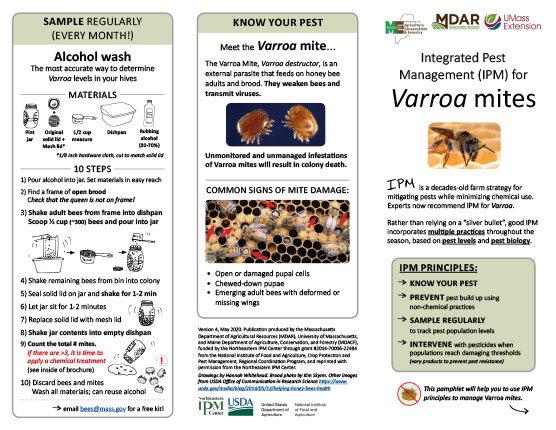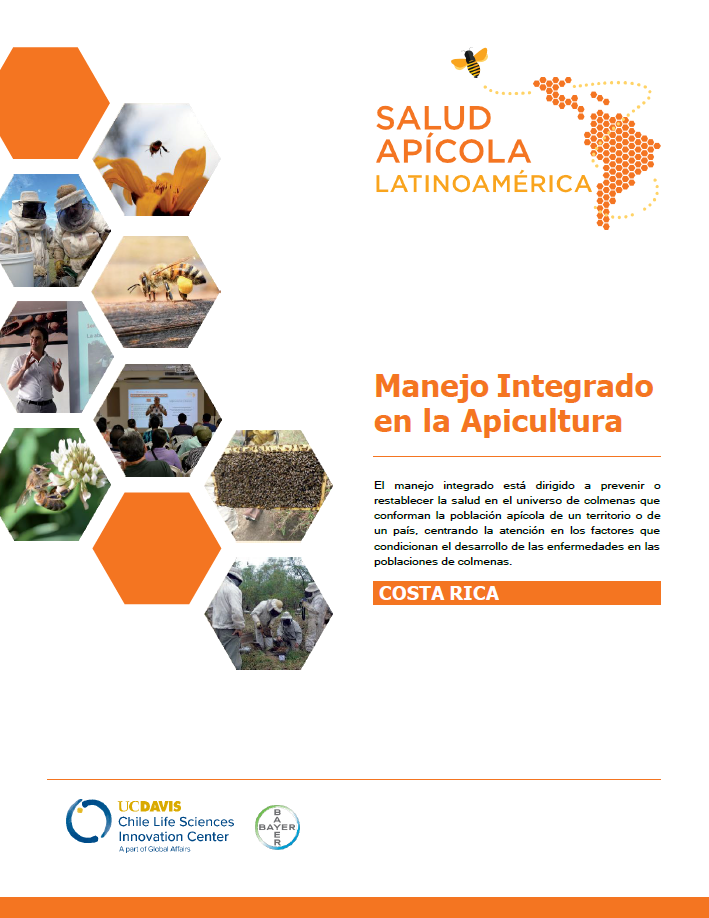IPM4Bees Resource Library
English Resources
Protecting Bees from Pesticides
Know what to look for when checking pesticide labels for insecticides that can harm pollinators, especially bees. Find out about the insecticides that are most toxic to honey bees, bumble bees, and native solitary bees. Also find 10 ways that individuals can help protect bees. Includes several online sources of information.
Protecting Bees in Iowa

Beekeepers and commercial pesticide applicators play important roles in protecting Iowa's bees. This publication outlines actions both groups can take to reduce the risks to bees that benefit Iowa's agroecosystem.
Varroa Mite IPM Brochure
The varroa mite, Varroa destructor, is an external parasite that attacks adult and immature stages (brood) of honey bees. These mites weaken bees and can transmit viruses during the feeding process.
This brochure introduces the varroa mite, provides steps to doing an alcohol mite wash, and lists IPM options for controlling varroa mites.
Publisher: Massachusetts Department of Agricultural Resources; Maine Department of Agriculture, Conservation and Forestry, and the Northeastern IPM Center
 Toxicity of Common Lawn, Garden, and Ornamental Pesticides in Iowa
Toxicity of Common Lawn, Garden, and Ornamental Pesticides in Iowa
Pesticides are toxic to target pests, but can also cause potential harm to the applicator or the environment. This publication discusses how to understand a pesticide label, its toxicity and whether it could be toxic to bees. It also contains table that provide information on commonly used insecticides, herbicides and fungicides.
Recursos en español
Cuaderno del Apicultor
Libreta para el registro de las actividades apícolas. Versión Chilena.
Hecho por Salud Apicola.
Manejo Integrado en la Apicultura
El manejo integrado está dirigido a prevenir o restablecer la salud en el universo de colmenas que conforman la población apícola de un territorio o de un país, centrando la atención en los factores que condicionan el desarrollo de las enfermedades en las poblaciones de colmenas. Versión Centroamericana.
Hecho por Salud Apicola.
Herramientas Para la Gestión de Varroa
Guía para el control y muestro eficáz del ácaro varroa.
Hecho por el Honey Bee Health Coalition.
Guía del Cuidado de Polinizadores de Hortalizas
Recomendaciones importantes para proteger su inversión en la polinización.
Hecho por Michigan State University